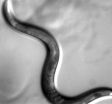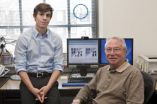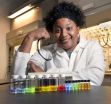(Press-News.org) An international team of scientists, led by researchers at the University of California, San Diego School of Medicine, have developed a new method for discerning the functions of previously uncharacterized genes and placing them in interactive, functional networks that reveal how gene products interact to bring about cellular events.
The research is published in the April 29 issue of the journal Cell. It was led by principal investigators Karen Oegema, PhD, professor of cellular and molecular medicine and head of the Laboratory of Mitotic Mechanisms in the Ludwig Institute for Cancer Research at UC San Diego, and Kristin C. Gunsalus, PhD, assistant professor in the Center for Genomics and Systems Biology in the Department of Biology at New York University.
More than a decade of genome sequencing projects have generated a comprehensive "parts" list of the genes required to build an organism, an inventory of the necessary cellular building blocks. But the functions of many of these genes remain unknown, preventing researchers from fully deciphering their cellular pathways and how their interactions might shed light on human disease.
One of the stars of this research is Caenorhabditis elegans, a tiny, much-studied worm that is an important model system for understanding processes in animal cells. In recent years, scientists have sought to create systemic catalogs of its gene functions, and those of other model organisms. These large-scale efforts place genes in interactive networks. Within these networks, proximity reflects similarity of function. In other words, genes with similar functions are directly linked and genes with dissimilar functions are further apart. The functions of uncharacterized genes are inferred based upon their proximity to genes whose functions are known.
Generating functional maps with the power to resolve differences in gene function requires a lot of information, which is typically obtained by "high-content" screening in which genes are individually inhibited and the consequences are documented by filming the behavior of individual cells.
Oegema, with the study's first author, Rebecca Green, PhD, a postdoctoral fellow at the Ludwig Institute and UCSD School of Medicine, decided to take a different approach. "Rather than monitoring individual cells, we monitored the effect of gene inhibitions on the structure of a complex tissue in a multicellular organism," said Green. "In this case, the reproductive organ of C. elegans."
The scientists discovered that inhibiting different genes in the nematode produced a remarkably diverse and information-rich spectrum of effects on tissue structure, essentially creating a "fingerprint" for each gene that allowed them to predict its function.
Oegema and colleagues also developed a new method to quantitatively assess the significance of gene-gene connections, allowing them to translate the information into a functional gene network. In collaboration with Gunsalus and colleagues, who developed a Java-based tool for visualizing gene networks, they produced an integrated functional network for a set of 818 essential C. elegans genes, which has been made available to interested researchers.
The network, the scientists said, will be useful for predicting the function of related human genes and the broader approach may be useful for generating functional gene networks in other organisms, including vertebrates.
INFORMATION:
Funding for this research came, in part, from the American Cancer Society, Helen Hay Whitney Foundation, Ludwig Institute for Cancer Research and the National Institutes of Health.
Co-authors of the study include Arshad Desai, Kimberley Laband and Shaohe Wang, all of the Ludwig Institute for Cancer Research and UCSD School of Medicine; Huey-Ling Kao, Monty Schulman and Fabio Piano, New York University; Anjon Audhya and Jonathan R. Mayers of the University of Wisconsin, Madison; Heidi Fridolfsson and Daniel Starr of UC Davis; Swathi Arur and Tim Schedl, Washington University, St. Louis; Sherry Niessen, The Scripps Research Institute, La Jolla; and Siegfried Schloissnig and Anthony Hyman of the Max Planck Institute, Germany.
As the worm turns, its secrets are revealed
New technique reveals functional gene networks in a live organism
2011-04-29
ELSE PRESS RELEASES FROM THIS DATE:
From the beginning, the brain knows the difference between night and day
2011-04-29
The brain is apparently programmed from birth to develop the ability to determine sunrise and sunset, new research on circadian rhythms at the University of Chicago shows.
The research sheds new light on brain plasticity and may explain some basic human behaviors, according to Brian Prendergast, associate professor in psychology at the University of Chicago and co-author of a paper published April 27 in the journal PLoS One. The lead author is August Kampf-Lassin, an advanced graduate student at the University.
"This finding may show us why infants of many species eventually ...
Get The Labels You Adore For Prices You Love at TK Maxx Crewe
2011-04-29
The long-awaited TK Maxx store is nearly ready to open its doors at the Grand Junction Retail Park, Crewe. This new store is set to open on Thursday 28 April at 9am and will feature nearly 20,000 sq ft of famous label fashion, shoes and accessories for men and women plus homewares, kids and toys - all at up to 60% off the RRP.
The first lucky 500 customers through the doors at 9am will be treated to a GBP10 gift card to spend in the new store.
The TK Maxx concept is simple. TK Maxx buyers shop the world all year round working direct with designers and negotiating ...
Study: Cotton swabs prove problematic for ear health
2011-04-29
DETROIT – A study by Henry Ford Hospital shows a direct association between cotton swab use and ruptured eardrum.
The study also shows that in most cases the rupture heals on its own and surgery is only necessary for the most severe cases.
"In the past, many otolaryngologists have wondered if surgery is really necessary to treat a ruptured eardrum. The results of this study show that 97 percent of cases healed on their own within two months, proving that most cases do not require surgery," says Ilaaf Darrat, M.D., an otolaryngologist at Henry Ford Hospital and co-author ...
Louisiana Tech researcher presents on eco-friendly nanotechnology at national conference
2011-04-29
RUSTON, La. – Dr. Yuri Lvov, professor of chemistry and T.C. Pipes endowed chair in micro and nanosystems at Louisiana Tech University, recently led a symposium at the 241st Conference of the American Chemical Society (ACS), discussing his application of a more eco-friendly and cost-effective nano-material that can be used to significantly improve the properties of plastics, paints and other synthetic composites.
The symposium featured Lvov's presentation on the use of clay "nanotubes" – created from dirt and soils found in a number of places on earth – to strengthen ...
Prejudice and the President
2011-04-29
Racial prejudice among some white Americans—even if unintentional—influences their views of President Barack Obama's "Americanism" and their assessment of how well he is performing in office, according to a University of Delaware doctoral student.
The psychology student, Eric Hehman, recently received the national Albert Bandura Graduate Research Award for his paper detailing a research study he conducted on the subject. The article, "Evaluations of Presidential Performance: Race, Prejudice, and Perceptions of Americanism," was published in the March issue of the Journal ...
Headwater - A Taste of Puglia- For Free!
2011-04-29
Firmly tucked away on the spur of Italy's heel, the dramatic coastline of Puglia is one of the country's best-kept secrets. It's a sun-soaked land of rolling vineyards, historic hamlets, colourful fishing villages and wonderfully deserted white beaches stretching as far as the eye can see.
Cycling in Puglia with Headwater allows you to explore at leisure, stopping off as the mood takes you, to enjoy long lazy lunches in pretty white villages or relaxing dips in the clear emerald seas of the Adriatic.
You'll eat well here too. Traditional Puglian cuisine uses the freshest ...
"Married Filing Jointly" is Not Always The Best Option
2011-04-29
"Married Filing Jointly" is Not Always The Best Option
Most tax professionals would agree that "married filing jointly" is generally the most advantageous filing status. Spouses' incomes are combined, deductable expenses are pooled together and there are some benefits that are available only to joint filers.
While a joint return is typically how married couples file, what if you had recently become suspicious of your spouse and the source some of his or her income? What if your spouse had been making millions or even billions from a Ponzi scheme ...
Iowa State chemist designs new polymer structures for use as 'plastic electronics'
2011-04-29
AMES, Iowa – Iowa State University's Malika Jeffries-EL says she's studying doing structure-property studies so she can teach old polymers new tricks.
Those tricks improve the properties of certain organic polymers that mimic the properties of traditional inorganic semiconductors and could make the polymers very useful in organic solar cells, light-emitting diodes and thin-film transistors.
Conductive polymers date back to the late 1970s when researchers Alan Heeger, Alan MacDiarmid and Hideki Shirakawa discovered that plastics, with certain arrangements of atoms, can ...
Stripping a Second Mortgage in a Chapter 13 Bankruptcy
2011-04-29
Stripping a Second Mortgage in a Chapter 13 Bankruptcy
One of current problems in the real estate market is the number of "underwater" mortgages, where the value of the properly has declined below the outstanding value of the mortgage. Banks have been extraordinarily resistant to the concept of loan modifications, where that modification would lower the principal value of the loan and bring it in line with the market value.
Most people are trapped in these houses, as they cannot sell them for a high enough price to allow them to pay off the mortgage. The ...
A tale of 2 lakes: One gives early warning signal for ecosystem collapse
2011-04-29
Researchers eavesdropping on complex signals from a remote Wisconsin lake have detected what they say is an unmistakable warning--a death knell--of the impending collapse of the lake's aquatic ecosystem.
The finding, reported today in the journal Science by a team of researchers led by Stephen Carpenter, an ecologist at the University of Wisconsin-Madison (UW-Madison), is the first experimental evidence that radical change in an ecosystem can be detected in advance, possibly in time to prevent ecological catastrophe.
"For a long time, ecologists thought these changes ...
LAST 30 PRESS RELEASES:
Germline pathogenic variants among women without a history of breast cancer
Tanning beds triple melanoma risk, potentially causing broad DNA damage
Unique bond identified as key to viral infection speed
Indoor tanning makes youthful skin much older on a genetic level
Mouse model sheds new light on the causes and potential solutions to human GI problems linked to muscular dystrophy
The Journal of Nuclear Medicine ahead-of-print tip sheet: December 12, 2025
Smarter tools for peering into the microscopic world
Applications open for funding to conduct research in the Kinsey Institute archives
Global measure underestimates the severity of food insecurity
Child survivors of critical illness are missing out on timely follow up care
Risk-based vs annual breast cancer screening / the WISDOM randomized clinical trial
University of Toronto launches Electric Vehicle Innovation Ontario to accelerate advanced EV technologies and build Canada’s innovation advantage
Early relapse predicts poor outcomes in aggressive blood cancer
American College of Lifestyle Medicine applauds two CMS models aligned with lifestyle medicine practice and reimbursement
Clinical trial finds cannabis use not a barrier to quitting nicotine vaping
Supplemental nutrition assistance program policies and food insecurity
Switching immune cells to “night mode” could limit damage after a heart attack, study suggests
URI-based Global RIghts Project report spotlights continued troubling trends in worldwide inhumane treatment
Neutrophils are less aggressive at night, explaining why nighttime heart attacks cause less damage than daytime events
Menopausal hormone therapy may not pose breast cancer risk for women with BRCA mutations
Mobile health tool may improve quality of life for adolescent and young adult breast cancer survivors
Acupuncture may help improve perceived breast cancer-related cognitive difficulties over usual care
Nerve block may reduce opioid use in infants undergoing cleft palate surgery
CRISPR primes goldenberry for fruit bowl fame
Mass General Brigham announces new AI company to accelerate clinical trial screening and patient recruitment
Fat tissue around the heart may contribute to greater heart injury after a heart attack
Jeonbuk National University researcher proposes a proposing a two-stage decision-making framework of lithium governance in Latin America
Chromatin accessibility maps reveal how stem cells drive myelodysplastic progression
Cartilaginous cells regulate growth and blood vessel formation in bones
Plant hormone allows lifelong control of proteins in living animal for first time
[Press-News.org] As the worm turns, its secrets are revealedNew technique reveals functional gene networks in a live organism


